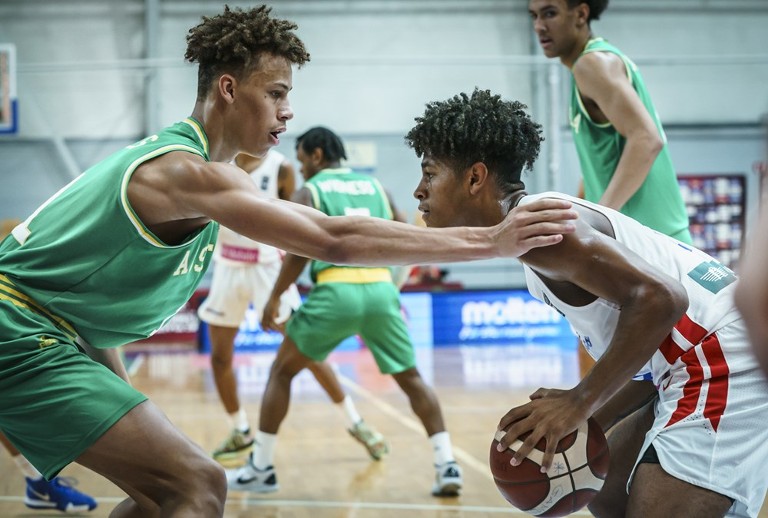21 November 2022
The ASC is proud to support athletes through every level of their sporting journey, from grassroots, to representing the Green and Gold on the world stage, to transitioning out of sport.

Despite the impacts of COVID-19 on grassroots sport, the ASC’s Local Sporting Champions grants program — which provides financial assistance for eligible coaches, officials and competitors aged 12 to 18 participating in state, national or international championships — distributed 5,697 grants in 2021–22.
The impact of the Local Sporting Champions was clear to see in mid-2022 when former recipient Dyson Daniels made history in the National Basketball Association (NBA) draft.
In June 2022, Daniels became the second player in as many years to be drafted from Basketball Australia’s NBA Global Academy at the AIS, when he was selected by the New Orleans Pelicans with Pick No. 8.
The 19-year-old’s rise to the elite level of the game started in junior competitions in Australia, with the help from Local Sporting Champions. Daniels first accessed the grants to help cover the costs of travelling from regional Victoria to Western Australia to compete at the under-14 Australian Junior Championships.
He later accessed the program in 2017 and 2018 to attend under-16 championships in Western Australia and Queensland and under-20 championships in Queensland in 2021.
The next generation in Green and Gold is also being supported by the AIS Performance Pathway Workforce grants.
Australia’s most talented young athletes are being supported on their long-term quest for success by the $11.4 million in funding provided during 2021–22 to employ pathway staff across 39 NSOs and NSODs.
Since its inception in 2019, the AIS Performance Pathway Workforce grants have provided sports with $16.2 million in grants.
This has generated 126 pathway lead, coach and support staff positions. Sports can now plan long-term, with the latest round of funding to support sports all the way through to the Paris 2024 Games.
Athletics Australia’s Director of Performance Sustainability Craig Pickering said: “The AIS Performance Pathway Workforce grants have enabled us to focus on 2 key areas of our pathway strategy — the effective use of data to support categorisation decisions, and the development of the coaches of our next generation of athletes.
‘’We’ve been able to achieve this by recruiting a pathway data lead and pathway coaching leads, who have been highly successful in driving improvements in these areas. Being able to continue this good work in the run-up to Paris will set us up for long-term success in Los Angeles in 2028 and Brisbane in 2032.”
The AIS also unveiled a new initiative in 2022 to ensure Australia’s retiring athletes remain connected to sport and can adjust to life after their athletic careers.
The more than $14.6 million each year provided by the AIS in direct grants (dAIS) to Olympic, Paralympic and Commonwealth Games athletes now includes a new allocation of grants for eligible athletes who are finishing their elite sporting careers.
Sixty-five Olympic and Paralympic athletes have also received the dAIS Transition grants following the Tokyo 2020 Games, with the grants providing an extra 6 months of funding security of up to $17,500.
Olympic gold medallist Emilee Barton (nee Cherry), who retired from Rugby Sevens following Tokyo 2020 said: “Throughout my entire professional sporting career I’ve been privileged to have the AIS at the forefront of my support. From the start at my very first high performance camp at the AIS in Canberra to now, retirement and transitioning out, the AIS has given me mental health, physical and financial support to succeed in all facets of life.”
‘’Retiring from playing came with lots of worries, but having that support and boost, I was able to navigate my way and take the next steps in my career, through coaching and inspiring the next generation.”
The next round of dAIS Transition grants will be made available to eligible athletes who retire after the Beijing 2022 Winter Games and Birmingham 2022 Commonwealth Games.
These pieces of work fall within our key strategic pillars outlined in the 2021-22 Annual Report.